Living Shorelines
Nature-based approaches for shoreline stabilization in tidal waters.
A living shoreline is a management practice that provides erosion control benefits; protects, restores or enhances natural shoreline habitat; and maintains coastal processes through the strategic placement of plants, stone, sand fill and other structural organic materials. This helps provide habitat value and protects against coastal hazards.
Increasing erosion and inundation of coastal wetlands due to sea-level rise and storms threaten property and natural resources in New Hampshire. Historic shoreline stabilization practices of rip rap (rock walls), revetments, and seawalls can actually make erosion worse, destroy intertidal habitat, and alter sediment transport patterns. For these reasons, hard structural solutions are either the least preferred alternative or prohibited in sensitive coastal areas. In suitable areas, living shorelines present a resilient approach to shoreline stabilization that can protect people, property, and important coastal habitats.
The New Hampshire Coastal Program (NHCP) is working with partner organizations to advance understanding, application and success of living shoreline stabilization approaches in coastal New Hampshire.
New Hampshire Living Shoreline Site Suitability Assessment
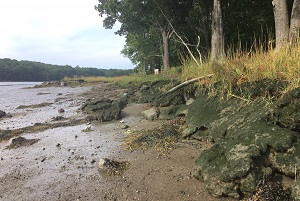 The New Hampshire Living Shoreline Site Suitability Assessment (L3SA) is intended to help interested stakeholders identify sites that are suitable for specific living shoreline approaches in order to address erosion issues along the New Hampshire tidal shoreline.
The New Hampshire Living Shoreline Site Suitability Assessment (L3SA) is intended to help interested stakeholders identify sites that are suitable for specific living shoreline approaches in order to address erosion issues along the New Hampshire tidal shoreline.
The L3SA evaluates living shoreline suitability using spatial data about the state's tidal shoreline and characteristics unique to the Northeast such as a short growing season, effects of ice, nor'easters, and large tidal range. The L3SA assigns a suitability index number between 1 (less suitable) and 6 (highly suitable) to points along the shoreline.
The L3SA was published by the NHCP in partnership with the NOAA Office for Coastal Management, the Great Bay Stewards, the New Hampshire Department of Fish and Game Great Bay National Estuarine Research Reserve (GBNERR), The Nature Conservancy New Hampshire, and the Northeast Regional Association of Coastal Ocean Observing Systems.
The L3SA results are intended to inform a range of end-users including NHDES Wetlands permitters, municipal conservation commission members, other regulatory agency staff, technical assistance providers, grant managers, engineers, consultants, landscape architects, nonprofits, and owners of land/property along the New Hampshire tidal shoreline as they consider appropriate stabilization actions for eroding shorelines.
The New Hampshire Living Shoreline Site Suitability Assessment (L3SA) Technical Report was published in 2019. The technical report includes details about the dataset development and the attribute descriptions. The L3SA is intended to be a screening tool used for planning purposes only and sites of interest should be further evaluated with a site-specific survey.
Related Content
Order a Property Profile
You can order a free Property Profile summarizing living shoreline site suitability results for a specific property along the tidal shoreline from the Coastal Program.
The Great Bay Living Shoreline Project
The Great Bay Living Shoreline Project aims to create new living shoreline projects in the Great Bay Estuary that protect salt marsh habitat and coastal communities from erosion, sea level rise and flooding.
Tidal Shoreline Erosion Management
A planting guide has been created to help tidal shoreline landowners develop a planting plan. It includes details about native or naturalized plant species that can help manage erosion near a tidal shoreline.
Status of Hard Shoreline Stabilization Structures
In 2016, NHCP completed an inventory of shoreline stabilization structures in tidal New Hampshire, which reported that about 12% of the state’s tidal shoreline is armored with structures, such as seawalls, rip rap and revetments.
Advancing our understanding of living shoreline approaches
As a member of the Northeast Regional Ocean Council (NROC), NHCP is working with other Northeast state coastal zone management programs and The Nature Conservancy Massachusetts (TNC-MA) to advance understanding of living shoreline approaches in New England. Additional New Hampshire partners on this work include the Great Bay Stewards, GBNERR, and the University of New Hampshire, and funds were provided by NOAA's Office for Coastal Management.
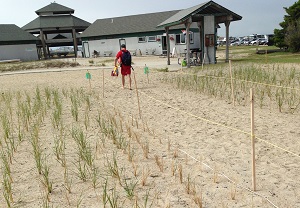
State of the Practice of Living Shorelines in New England
In Phase I of the regional living shoreline efforts, project partners published a “Living Shorelines State of the Practice Report,” developed profiles for living shoreline archetypes, evaluated regulatory issues associated with living shoreline practices, hosted workshops, and worked with local communities and stakeholders to advance living shoreline projects.
Access the State of the Practice Report and Living Shoreline Profile Pages
Applying and Monitoring Living Shoreline Projects in New England
In Phase II of regional living shoreline efforts, the Northeast state coastal zone management programs are working with NROC and TNC-MA to build living shoreline projects and implement consistent regional monitoring approaches that enable comparison of project effectiveness across states.
Pilot Projects
Pilot projects in coastal New Hampshire are in various phases of construction and monitoring. Sites include fringe salt marsh restoration at North Mill Pond in Portsmouth, a rip rap replacement with fringe marsh creation at Cutts Cove in Portsmouth, an erosion management fringe marsh creation at Wagon Hill Farm in Durham, and dune enhancement in Hampton and Seabrook. The Coastal Program is working with partners at the University of New Hampshire (UNH), including UNH Extension and NH Sea Grant, as well as the Great Bay Stewards and GBNERR, to provide assistance to coastal landowners and professionals interested in utilizing living shoreline approaches.
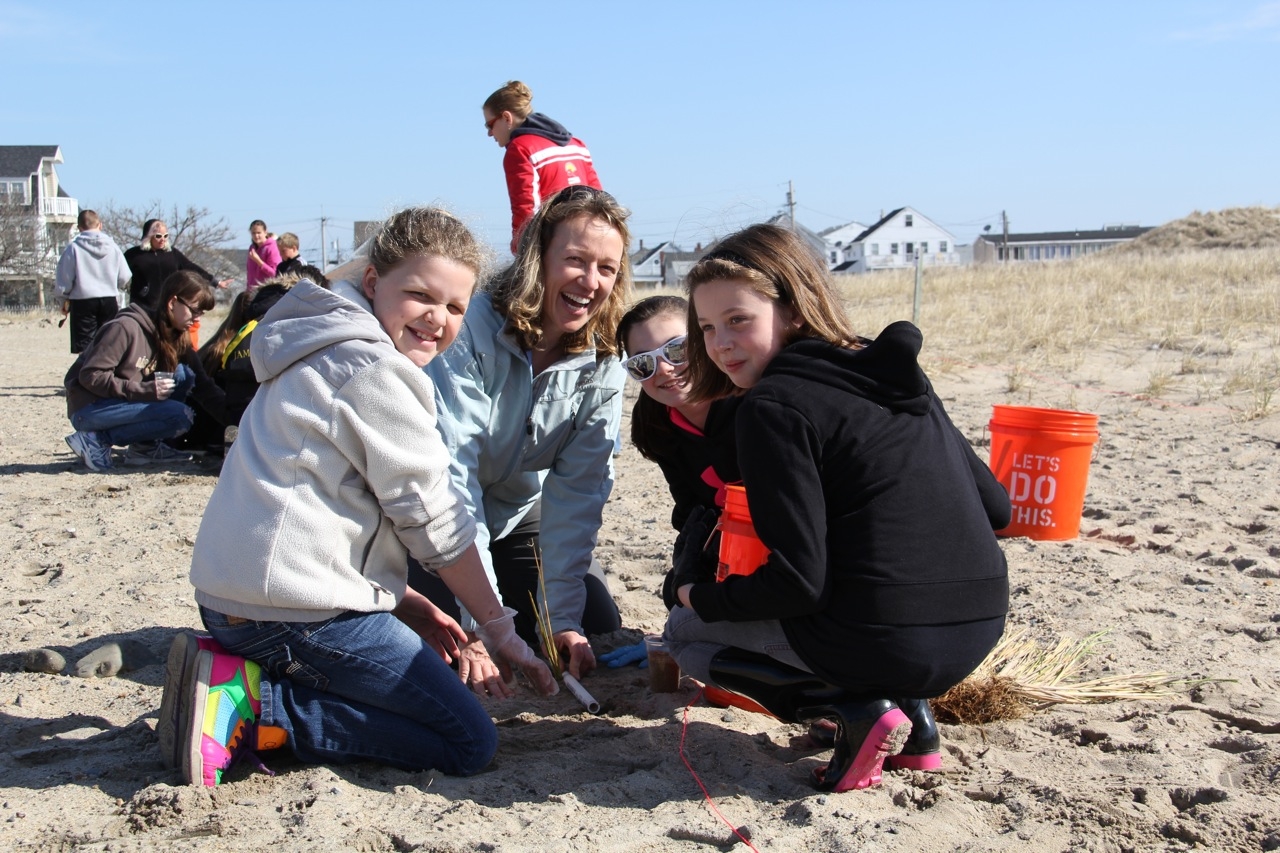
Enhancing habitat and storm protection in Hampton and Seabrook
Dune restoration living shoreline work has been ongoing in Hampton and Seabrook for several years to enhance habitat and provide erosion control and storm protection benefits. Monitoring is ongoing at the sites. For opportunities to assist with dune restoration, follow the Coastal Research Volunteers at New Hampshire Sea Grant.
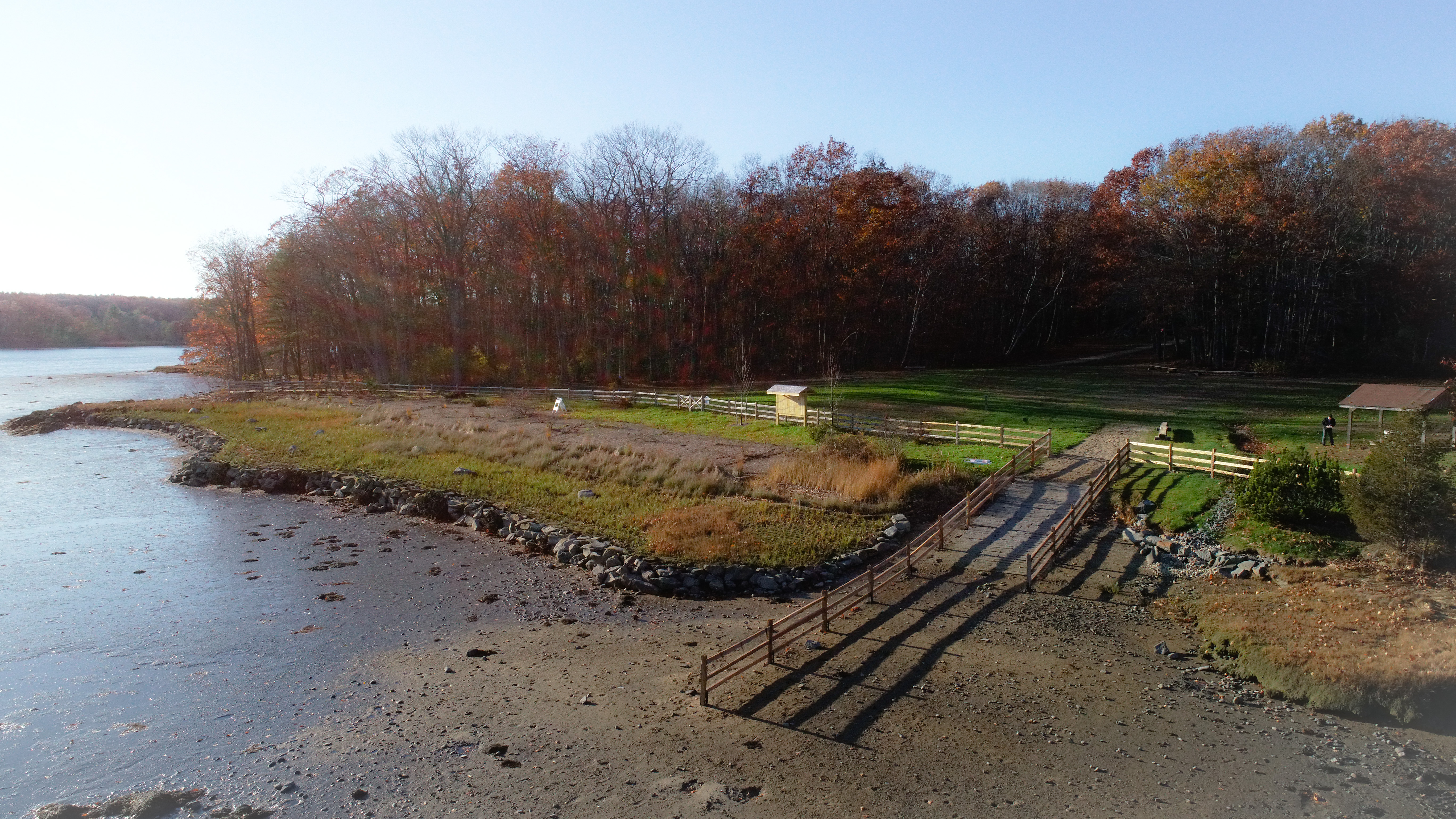
Wagon Hill Farm erosion management project
A fringe salt marsh living shoreline erosion management project was constructed at Wagon Hill Farm in Durham, New Hampshire in 2019. Efforts to monitor project success continue for five years.
Cutts Cove fringe salt marsh project
A fringe salt marsh living shoreline restoration project was constructed at Cutts Cove in Portsmouth, New Hampshire. Monitoring continues at the site.
Coastal Landowner Technical Assistance Program
The Coastal Landowner Technical Assistance Program (LTAP) provides consistent assistance to interested coastal landowners to help understand coastal flood and erosion risks and restoration opportunities, clarify goals for managing their property, and identify conceptual options that may enhance the resilience of their properties, neighborhoods and community's natural resources. LTAP provides site visits to participating properties along with targeted risk assessment and guidance information. If you are a coastal landowner interested participating in LTAP, please contact us.
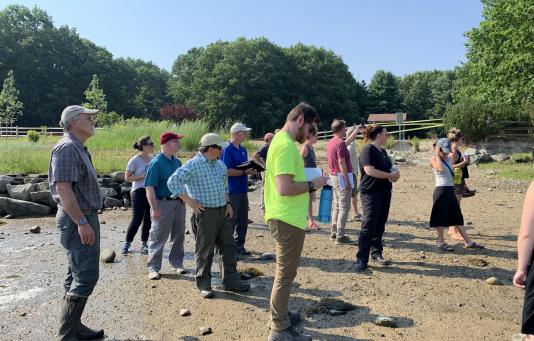
The Living Shoreline Professionals Network
The Living Shoreline Professionals Network is a group of practitioners, including but not limited to coastal engineers, project managers, contractors, landscape architects and other landscape professionals, interested in applying living shoreline approaches in their work. The group meets quarterly to discuss projects, issues and opportunities. If you are a professional interested in networking with others involved in living shoreline work, please contact us.




